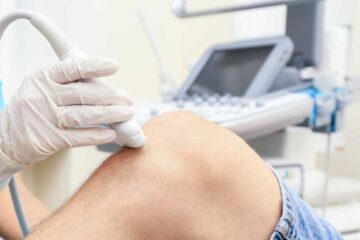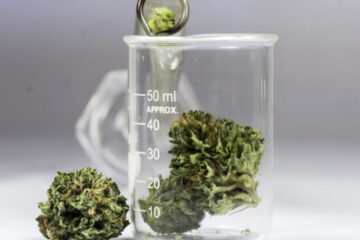
Alcohol consumption is a prevalent aspect of social life in many cultures, but it can also lead to harmful behaviors and negative health consequences. Excessive alcohol use is linked to a variety of issues, including impaired judgment, addiction, accidents, and chronic health problems. To mitigate these risks, alcohol monitoring has emerged as an effective tool in both personal and professional contexts. This article explores the role of alcohol monitoring in preventing harmful behaviors and promoting healthier lifestyles.
Understanding Alcohol Monitoring
Alcohol monitoring involves the use of devices and systems to track an individual’s alcohol consumption in real-time. These tools can range from breathalyzers to wearable sensors and mobile applications. They provide accurate and timely data on alcohol levels, helping individuals, healthcare providers, and legal authorities make informed decisions regarding alcohol use.
Types of Alcohol Monitoring Devices
Breathalyzers: These are portable devices that measure the concentration of alcohol in a person’s breath. They are commonly used by law enforcement to assess drivers’ sobriety but are also available for personal use.
Wearable Sensors: These devices, often worn on the wrist, monitor alcohol levels through sweat. They provide continuous data and can alert the wearer or designated individuals if alcohol consumption exceeds preset limits.
Mobile Apps: Some mobile applications are designed to help individuals track their drinking habits. These apps often include features like drink logs, reminders, and educational resources to support responsible drinking.
The Importance of Alcohol Monitoring
Alcohol monitoring is crucial for several reasons:
Prevention of Harmful Behaviors: Monitoring helps individuals recognize when they are approaching unsafe levels of alcohol consumption, allowing them to take corrective action before engaging in risky behaviors.
Support for Recovery: For individuals in recovery from alcohol addiction, monitoring provides accountability and supports adherence to sobriety goals. It can also offer real-time feedback and encouragement, which are critical for long-term recovery.
Legal and Workplace Compliance: In legal contexts, such as DUI cases, and in workplace environments where safety is paramount, alcohol monitoring ensures compliance with laws and regulations. It helps protect public safety and maintain a safe working environment.
Alcohol Monitoring in Practice
Personal Use
Alcohol monitoring devices can assist individuals in regulating their alcohol consumption and promoting better lifestyle choices. For instance, one may utilize a breathalyzer prior to operating a vehicle to confirm compliance with legal alcohol limits. Likewise, wearable sensors offer ongoing monitoring to aid users in maintaining safe drinking levels.
Healthcare and Recovery
In healthcare settings, alcohol monitoring is an essential component of treatment plans for individuals with alcohol use disorder (AUD). Healthcare providers can use data from monitoring devices to tailor treatment plans, offer timely interventions, and track progress. Additionally, studies have shown that continuous monitoring can improve treatment outcomes by providing patients with a tangible way to measure their sobriety and success.
A notable example in this field is the use of Soberlink, a remote alcohol monitoring system. According to a study of Soberlink reviews, users reported significant improvements in their ability to manage alcohol consumption and adhere to sobriety plans. The system’s ability to provide real-time data and notifications played a critical role in supporting recovery and preventing relapse.
Legal and Workplace Settings
Alcohol monitoring is also used extensively in legal and workplace environments. For instance, courts may mandate the use of alcohol monitoring devices for individuals convicted of DUI offenses.
In workplaces, especially in industries where safety is critical, such as construction or transportation, employers may implement alcohol monitoring programs. These programs help maintain a safe work environment by ensuring that employees are not under the influence while on the job. This not only protects the employees themselves but also their colleagues and the public.
Challenges and Considerations
While alcohol monitoring offers numerous benefits, it is not without challenges. Privacy concerns are a significant issue, as continuous monitoring can feel intrusive to some individuals. Ensuring the accuracy and reliability of monitoring devices is also critical, as inaccurate readings can lead to wrongful accusations or missed interventions.
Moreover, the cost of monitoring devices and systems can be a barrier for some individuals and organizations. Ensuring access to these tools, especially for those who need them most, is an important consideration for policymakers and healthcare providers.
Conclusion
Alcohol monitoring plays a vital role in preventing harmful behaviors associated with excessive drinking. By providing real-time data and feedback, these tools help individuals make informed decisions about their alcohol consumption. Whether used personally, in healthcare settings, or in legal and workplace environments, alcohol monitoring supports safer behaviors, aids in recovery, and promotes healthier lifestyles. As technology advances and becomes more accessible, the potential for alcohol monitoring to positively impact society continues to grow.
What are blue lotus gummies and their benefits?
March 24, 2025Role of shockwave therapy in treating relationship-related ED
February 27, 2025Tips for Consuming Delta-8 Gummies for Gamers
January 27, 2025
Comments are closed.
-
How to turn your passion into a small business?
April 15, 2023 -
Slots Online: A Comprehensive Guide
January 20, 2023 -
What to Expect During Your First Visit to a Suboxone Clinic?
April 30, 2024





